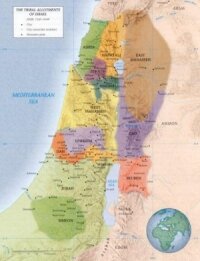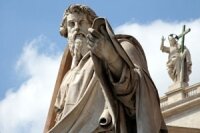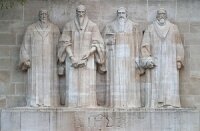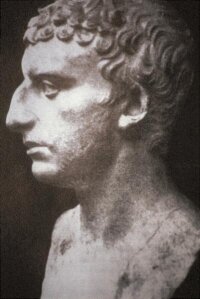 Israel had 12 sons, as follows: Reuben, (ראובן Rĕ'uwben, Jacob's firstborn); Simeon, (שמעון Shim`own); Levi, (לוי Leviy); Judah, (יהודה Yĕhuwdah); Dan, (דן Dan); Naphtali, (נפתלי Naphtaliy); Gad, גד( Gad); Asher, (אשר 'Asher); Issachar, (יששכר Yissaskar); Zebulun, (זבולון Zĕbuwluwn); Joseph, (יוסף Yowceph); Manasseh, (מנשה Mĕnashsheh); Ephraim, (אפרים 'Ephrayim); Benjamin (בנימין Binyamiyn). (Jacob was renamed Israel Gen. 32:27-29)
Israel had 12 sons, as follows: Reuben, (ראובן Rĕ'uwben, Jacob's firstborn); Simeon, (שמעון Shim`own); Levi, (לוי Leviy); Judah, (יהודה Yĕhuwdah); Dan, (דן Dan); Naphtali, (נפתלי Naphtaliy); Gad, גד( Gad); Asher, (אשר 'Asher); Issachar, (יששכר Yissaskar); Zebulun, (זבולון Zĕbuwluwn); Joseph, (יוסף Yowceph); Manasseh, (מנשה Mĕnashsheh); Ephraim, (אפרים 'Ephrayim); Benjamin (בנימין Binyamiyn). (Jacob was renamed Israel Gen. 32:27-29)The Tribe of Levi was set apart from the others in the sense that, the members of the Tribe of Levi were to be in charge of the tabernacle of the Testimony.
(see: Num. 1).
The Tribe of Joseph is not usually listed with the Hebrew tribes although Joseph is one of Jacobs twelve sons, the eldest of Rachel. It is sometimes referred to as the House of Joseph. Rather, the two tribes founded by his sons Ephraim and Manasseh are listed separately. (see Tribe of Joseph)
Politically, the Israelites were composed of thirteen tribes: Reuben, Simeon, Levi, Judah, Dan, Naphtali, Gad, Asher, Issachar, Zebulun, Manasseh, Ephraim, and Benjamin. In parts of the Bible, Ephraim and Manasseh are treated as together constituting the House of Joseph, while the Levi have a special religious role and had only scattered cities as territory; whence traditionally either Ephraim and Manasseh were counted as one tribe, or Levi wasn't counted, so that together the tribes were the Twelve Tribes of Israel (see also: Gen. 32: 27-29, Gen. 48:5).
More...


























